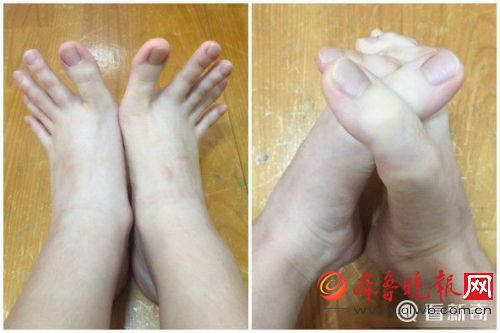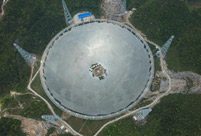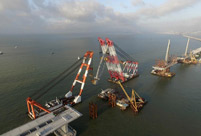

SEOUL, July 8 -- South Koreaand the United Statesdecided Friday to deploy the U.S. missile defense system, called Terminal High Altitude Area Defense (THAAD), in the former's soil by the end of next year despite strong opposition from neighboring countries.
Here is what the THAAD is and why it causes a lot of controversies at home and abroad:
THAAD is a U.S. army anti-ballistic missile system, designed by the U.S. defense company Lockheed Martin, to shoot down missiles in a terminal phase using a hit-to-kill approach. It is considered core assets of the U.S. missile defense system, boosting worries about the deployment in South Korea indicating the country becoming part of the U.S. MD system in Northeast Asia.
If the final site for the deployment is decided upon within weeks, one THAAD battery is expected to be moved from the U.S. mainland to the South Korean soil. The U.S. military currently operates five THAAD batteries, planning to increase the number to seven by 2019.
A battery is composed of six mobile launchers, 48 interceptors, airborne radar and fire control system, totaling an estimated value of 1.5 trillion won (1.3 billion U.S. dollars). One launcher can load eight interceptors, capable of reloading in 30 minutes.
Under controversies are the THAAD's intercepting altitude and the radar's detectable range. The THAAD's X-band radar, or the AN/TPY-2 radar, has two versions: forward-based mode (FBM) and terminal mode (TM) that are the same in hardware and different in software and communications system.
The radar can spot missiles as far as 2,000 km with forward-based mode and 600 km with terminal mode, which Seoul reportedly seeks to adopt. But the terminal mode can be converted into the forward-based mode at any time as the two have the same hardware.
It caused strong backlashes from China and Russia, which had repeatedly voiced serious concerns about the deployment as it far exceeds South Korea's actual defense needs and directly threatens the security interests of the two countries.
Operational effectiveness of the THAAD in South Korea has fallen under suspicion for long as the U.S. air defense system falls short of shielding the country from hundreds of shorter-range missiles from the Democratic People's Republic of Korea (DPRK) that can fall on the entire South Korea in several minutes.
THAAD interceptors are designed to destroy ballistic missiles at an altitude of 40-150 km at the terminal phase of flight, but most of DPRK missiles targeting South Korea fly at a much lower altitude.
Pyongyang is known to have about 400 Scud missiles with a 300-700 km range and some 300 Rodong missiles that can hit targets as far as 1,200 km. The 700 attack missiles and other shorter-range arsenal, including multiple rocket launchers deployed in border areas, fly at an altitude of less than 20 km, capable of striking Seoul within a minute and the entire South Korea in 10 minutes.
Skepticism was heard even from a U.S. air defense expert about the still unverified THAAD system. Massachusetts Institute of Technology (MIT) emeritus professor Theodore Postol said in an interview with local newspaper Hankyoreh earlier this year that the DPRK could explode its warhead-carrying missile into multiple pieces to block the THAAD radar from identifying an actual warhead.
As there is no air-drag to slow up light objects relative to heavy objects at a very high altitude, the exploded fragments will serve as false targets, flying along with a real warhead on the same general trajectory. The self-destruction technology can be applied to Rodong missiles, according to the professor.
 Girl goes viral for finger-long toes
Girl goes viral for finger-long toes Five made-in-China hi-tech breakthroughs
Five made-in-China hi-tech breakthroughs HK-Zhuhai-Macao Bridge to open to traffic
HK-Zhuhai-Macao Bridge to open to traffic China opens its first combined transport service to Nepal
China opens its first combined transport service to Nepal Students take stylish bikini graduations photos
Students take stylish bikini graduations photos Charming dancing students pose for graduation photos
Charming dancing students pose for graduation photos Guizhou, Yunnan section of Shanghai-Kunming railway connected
Guizhou, Yunnan section of Shanghai-Kunming railway connected Naked models transformed into landscapes, birds and even DRAGONS by body painting artist
Naked models transformed into landscapes, birds and even DRAGONS by body painting artist World’s biggest cruise ship Harmony of the Seas to start maiden voyage
World’s biggest cruise ship Harmony of the Seas to start maiden voyage Top 20 hottest women in the world in 2014
Top 20 hottest women in the world in 2014 Top 10 hardest languages to learn
Top 10 hardest languages to learn 10 Chinese female stars with most beautiful faces
10 Chinese female stars with most beautiful faces China’s Top 10 Unique Bridges, Highways and Roads
China’s Top 10 Unique Bridges, Highways and Roads China’s floods to spike global commodity prices
China’s floods to spike global commodity prices Sea provocation by Philippines, US will meet firm countermeasure
Sea provocation by Philippines, US will meet firm countermeasure Animals rescued from S.China floods
Animals rescued from S.China floods Foreigners discuss the different ways of eating freshwater lobster and the culinary cultures behind them
Foreigners discuss the different ways of eating freshwater lobster and the culinary cultures behind themDay|Week